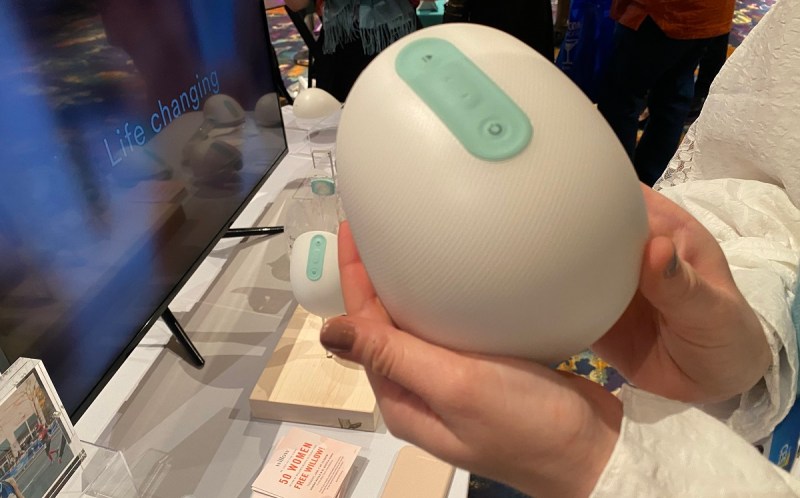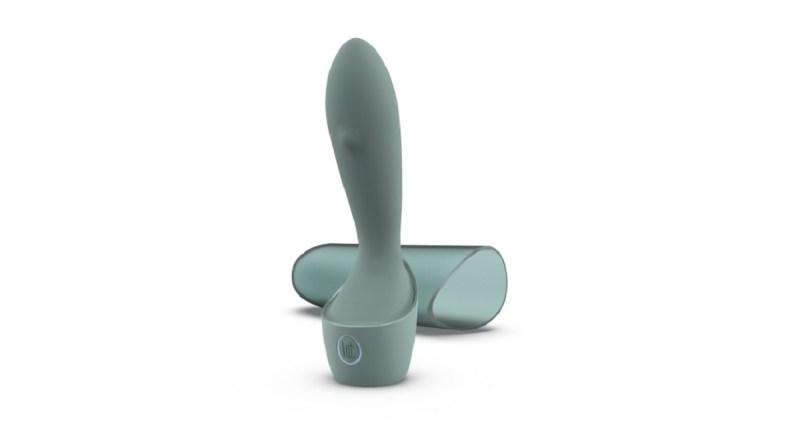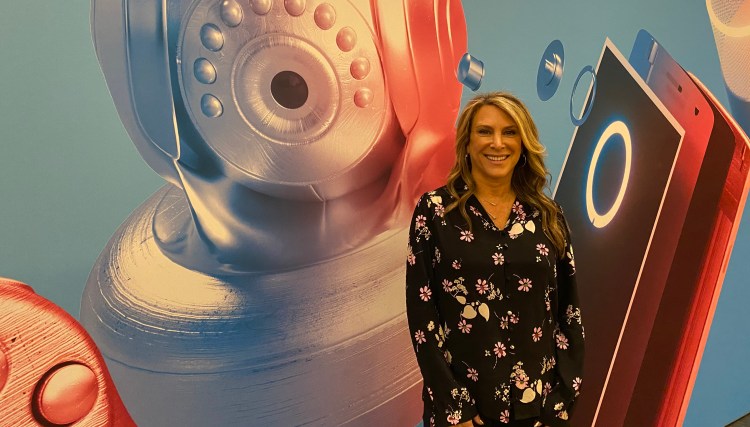Shelley Zalis, CEO of The Female Quotient, turned a lot of heads while walking the aisles of CES 2020.
That was because she was leading a tour of the CES booths at the head of a pack of 225 women. That’s one way she is working to bring gender equity to the technology industry. Zalis, whose company is focused on gender equality, was appointed the official Equality Partner by the Consumer Technology Association (CTA), host of the the big tech trade show in Las Vegas last week.
Zalis set up an Equality Lounge at CES as a place for men and women to come together to inspire change. We sat down with Zalis to talk about issues affecting women working in the tech world and as tech consumers. Our topics included the controversy around the fireside chat with Ivanka Trump, tech for moms, and sex tech’s arrival at the show.
Here’s an edited transcript of our interview.
June 5th: The AI Audit in NYC
Join us next week in NYC to engage with top executive leaders, delving into strategies for auditing AI models to ensure fairness, optimal performance, and ethical compliance across diverse organizations. Secure your attendance for this exclusive invite-only event.

Above: CES 2020
VentureBeat: Can you talk about how this appointment happened and what’s motivating that?
Shelley Zalis: I’m the CEO of the Female Quotient, and we’ve become the official Equality Partners of CES, which is very exciting. This is our seventh year at CES. We started doing a little walking tour of 50 women, walking the floor of CES. This year, we had more than 225 women walking the floor. We talk a lot about the power of the pack. A woman alone has power. Collectively, we have impact.
The greatest part about walking the floor wasn’t just seeing all the amazing technology, but watching every guy’s head turn when they saw this pack of women at CES. You have 170,000 people here at CES, but you don’t often see 225 women together. It’s hard to ignore.
VentureBeat: What do you look for? What are some of the interesting things you’re taking into account?
Zalis: The walking tour, first and foremost, is about the visibility of women in tech. We’re all the women. We’re all here. We’re all together. The second thing is looking at great technology, and especially the implications of AI. If you’re missing women in coding and AI — bias in, bias out. [It’s about] looking at some of the AI and the smart technology. But also having a female curator of all the technology. We weren’t just looking at big screens and small screens. We’re looking at the implications and applications of technology and how it impacts your life. Really immersive conversations.
[We’re] even working with CES on getting more representation of women on the main stage. One of the biggest implications — we said, “If you want more women, stop looking for titles.” If you’re looking for CEOs, you’ll keep falling short. Less than 5% of CEOs are women. So look for topic experts. We have plenty of topic experts on AI, on technology, on innovation, across the board. That was a big turning point where we saw a lot more diversity this year on the main stage.
Even the dress code for people manning the booths. We want people to look at the products and experience the products, not just come because — we want the eye candy to be the tech, not the people. Another advancement was bringing sex tech back to CES. That was very rewarding.
VentureBeat: Those conversations must have been funny and weird and important at the same time.
Zalis: They were effective. Sometimes we have to get comfortable being uncomfortable.
VentureBeat: They still seem to struggle.
Zalis: It’s all about opportunity. I don’t think everything is going to be fixed at the snap of a finger. It won’t happen overnight. But it’s a step change. It starts with a conscious mindset. First it’s education and awareness of what the challenges are, and then it’s a conscious mindset, making a choice. CES has done and is doing a really good job of listening, learning, adapting, and evolving. That’s what we’re seeing this year.

Above: Ivanka Trump
VentureBeat: For some reason, Ivanka Trump turned out to be the most controversial keynote choice this year.
Zalis: But she was talked about, and she was a woman in the top position. Depending on what the objective was — it really was about workforce. They’re doing a lot of work around workforce. Is she a woman in tech? No. But is she a person that’s doing stuff around workforce? Yes. I think that sometimes there’s a lot of microsensitivity. We like to point the finger. But she’s very bright, very smart, very articulate, very knowledgeable about workforce and what government is doing around workforce. That was the topic.
Sometimes when you hear the word “tech” — and CES is about tech — the first thing will be, “She knows nothing about tech, and she’s not doing anything about tech.” I would say that’s true.
VentureBeat: It seemed like there was a relevant topic that gets ignored there, this prediction that AI could eliminate as much as a third of all jobs.
Zalis: And a lot of those jobs are jobs for women. The reality is it’s an important conversation. Technology and automation and AI will eliminate a lot of entry-level positions. Those positions are held by women. That will impact change. When you look at a lot of the predictions of not even filling the pipeline for technology — these are big challenges, but also big opportunities in areas where we need to do a better job of filling the pipeline, making sure we groom the talent from high school through getting into the workplace so we don’t see such a big drop of women, even at the entry level.
And it’s why we need more women in tech to begin with. Even though AI is going to automate a lot of jobs, you still need to have human input around how you formulate what you’re looking for.
VentureBeat: What’s the grade for the tech industry, having started with products for geeks and a lot of male-oriented, gamer-oriented products? How is the diversification of markets going?
Zalis: Well, all products are for people. Games are equally played by men and women. The same thing with sports. It’s more the contextualization of technology. We all drive cars, men and women. I think in my lounge I said that tech has no gender. But we need more of everything if we truly want to have tech reflect consumers that are purchasing — gender, race, age, intersectionality. We’re all engaging with tech. We need to keep that in mind.
A big trend, too, is accessibility, tech for accessibility. The mobility concept around tech and how that’s enabling — equal is equal, that comes into play.

Above: Willow’s latest breast pump at CES 2020.
VentureBeat: This position seems interesting in that you have to walk a balance between pinkwashing this and holding their feet to the fire. How do you see the balance?
Zalis: I see developing tech. Tech is gender-neutral to me. But I do believe that, more from innovation, we need to make sure tech is reflecting the people it’s created for. For example, when you look at seat belts, they were made by men and tested by men, which is why they don’t really feel comfortable on female anatomy. That’s why we say diversity is good for business. Diversity is good for innovation. Diversity is good for tech.
VentureBeat: I heard yesterday in a conversation — it’s interesting that things like breast pumps for women —
Zalis: Willow, yeah. We have Willow in our lounge.
VentureBeat: They were in their own room one year, along with things like nail products. It was like the ghetto for moms. This year, sex tech came into the show, but I think they especially appreciated that they were spread throughout health and wellness. It’s not just a red light district within the show.
Zalis: Sex tech — we make these topics taboo topics. It’s all about health and wellness. What people decide to go experience is their choice. Pretending that sex tech isn’t tech — if you’re going to be in the tech business, you need to represent all aspects of tech.

Above: The Lora DiCarla Osé Onda uses microrobotics to stimulate G-spot orgasms.
VentureBeat: It seems like there are definite decisions that can be made that make people feel better. If you treat them in a different way, you get a different result.
Zalis: No one wants to feel like an exception. Then you feel like an outcast. It’s telling the story. There are different areas that you can go visit. You can visit the appliance area. You can visit the automotive area. You can visit the sex tech area. Willow is specifically a product for women. That’s not shrinking and pinking it. That’s a product that was developed for female advancement. And also for allowing women to go to work more easily. It’s a huge advancement. Willow is a phenomenal product.
VentureBeat: What’s your guidance or road map for the future? What would you like to see happen?
Zalis: One thing I’m most excited about is tech for good. Technology is such an enabler. Thinking about tech for good and how we can advance women, advance equality in the workplace, how it impacts work-life balance challenges — I think we can go a long way toward advancing the quality of the workplace.


